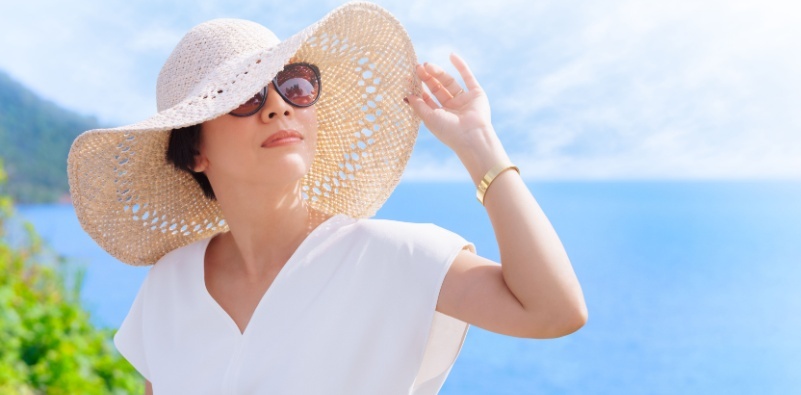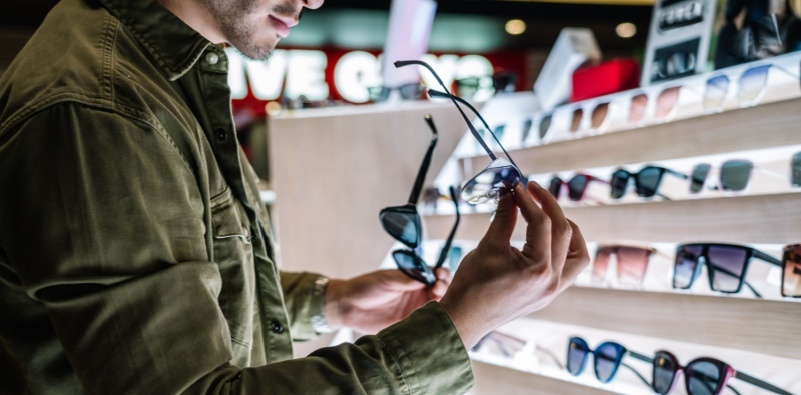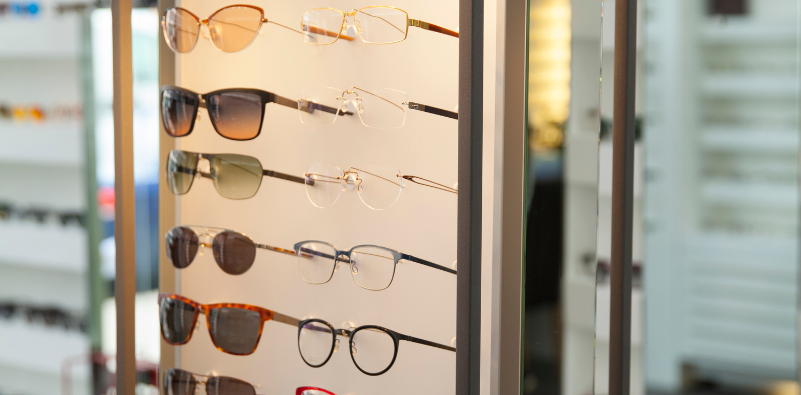Embracing UV protection
As spring slowly transforms into summer, we’ll inevitably spend more time outdoors. Something as simple as the sun radiating down on us can lift our collective spirits and pull the dampness out of our bones. Although other countries have gorgeous weather almost daily, we don’t think anything can beat a perfect British summer day.
Whether it’s cloudless or not, it’s important to remember the power and strength of the sun’s radiation. Our expert opticians discuss UV rays, the importance of UV protection, and why you can benefit from having a pair of UV-protection sunglasses.
What are UV rays?
UV (ultraviolet) light is radiation produced by the sun. The rays are part of the electromagnetic light spectrum, but because their wavelengths are so short, they are invisible to the naked eye. However, they do contain high levels of energy that can be harmful to our eyes.
UV rays fall into three categories: UVA, UVB, and UVC. UVC contains the highest energy levels and would be extremely harmful to our eyes and skin if the Earth’s ozone layer did not absorb it. The other two, UVA and UVB, can be cause for concern.
The difference between UVA and UVB rays
UVA rays can penetrate the atmosphere, even in cloudy Britain. As much as 95% of the radiation we take in comes from UVA rays. They can pass through the cornea of our eyes, reaching the lens and the light-sensitive retina at the back. Overexposure after years of accumulation can lead to cataracts and age-related macular degeneration later in life.
Only some UVB rays make it through the atmosphere to us, as most are filtered by it, but the ones that do are more powerful than UVA rays. The frequency, however, means they only reach the surface level of the eye. This can still be problematic, causing issues such as photokeratitis—essentially the scientific way to say your eyes have been sunburnt.
Why should you own a pair of UV protection sunglasses?
Our eyes are magnificent and complex organs but also susceptible to damage. Fortunately, protecting our eyes while spending time outdoors can be simple. By wearing UV protection sunglasses, you help reduce the chances of developing conditions such as cataracts and photokeratitis, as well as eye cancer and pterygium.
Cataracts
Cataracts develop slowly over time and are one of the most common causes of vision impairment worldwide. They occur when the transparent lens of the eye begins to cloud over, stopping light from passing through to the retina. They are not painful, and you may not even notice the condition in its early stages. Once it progresses to the point that your daily activities are affected, cataract surgery is the only real solution.
You can reduce the risk of cataracts by refraining from smoking, not drinking alcohol excessively, consuming a healthy diet containing fruit and vegetables, and, of course, protecting your eyes with a proper pair of UV protection sunglasses.
Photokeratitis
We have all probably been irresponsible and let our skin burn while out in the sunshine. Burning our eyes is more complex, but it’s not impossible. The cornea’s surface is sensitive, and overexposure to UV light can cause inflammation and irritation.
You might experience watery eyes, a burning sensation, an uncomfortable, gritty feeling, red or bloodshot eyes, vision issues and/or puffy eyes. These symptoms typically subside in a day or two, but repeated exposure can cause long-term damage.
Photokeratitis is often referred to as snow blindness, as it is more likely to occur in snowy conditions due to the reflection from the ground and stronger UV radiation at higher altitudes. It’s sensible to wear eye protection when out and about in sunny conditions and when artificial UV light is present, including when using welding equipment.
Eye cancer
Eye cancer is a rare condition affecting less than 1,000 people a year but with dramatic consequences. As with most conditions, risk factors increase with age, so it’s important to be vigilant about eyecare and routine checkups as you age gracefully.
Melanoma of the eye (essentially a type of skin cancer) is more common in older people, and some people have genetic factors that can add to their risk.
Squamous cell eye cancer is another type of cancer that has strong links with exposure to sunlight and UV radiation. Although it is more common in countries with stronger sunlight than in the UK, it still pays to be careful.
Pterygium
Similar to cataracts, pterygium causes vision to become distorted. Typically, starting in the corner of your eyes closest to your nose, they can grow and cover the cornea. In the process, they can cause the cornea to become deformed, leading to astigmatism.
This rarely causes vision loss, and treatment is usually unnecessary, but surgery is an option in more established cases.
Those who spend a lot of time outdoors are more likely to develop pterygium. UV radiation is the main culprit here, enhanced by snow and water and environmental conditions that can cause dust and other pollutants to enter the eyes.
The importance of wearing sunglasses: UV protection
Not all sunglasses are made equal, and low-quality or scratched lenses can potentially do more harm than good. We want to stress the importance of choosing sunglasses with 100% UV protection from UVA and UVB rays. These will shield your eyes best in the long term. Reputable glasses will carry the CE mark for EU standard compliance and the UV400 label.
Visit Us
We offer a wide range of 100% UV protection sunglasses at our opticians in Temple Fortune, Finchley, and Potters Bar. If you need assistance choosing the perfect pair or simply want more information, we’d love to hear from you. Get in touch with one of our team today.




